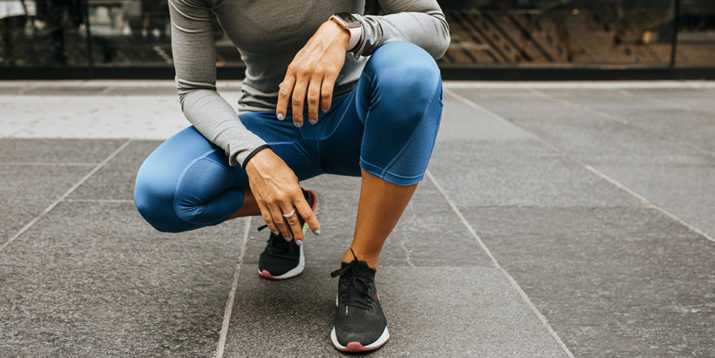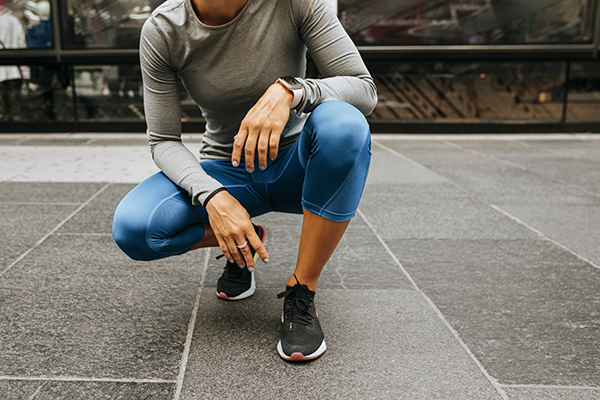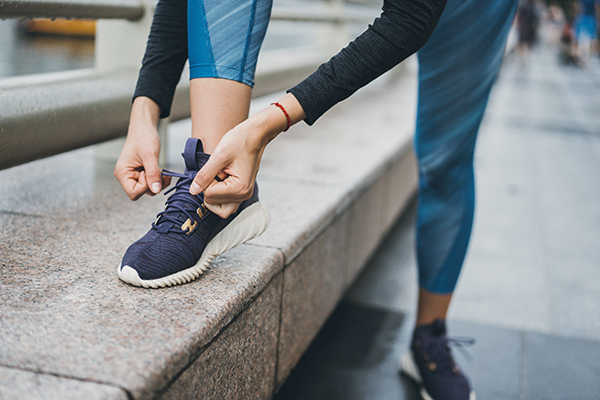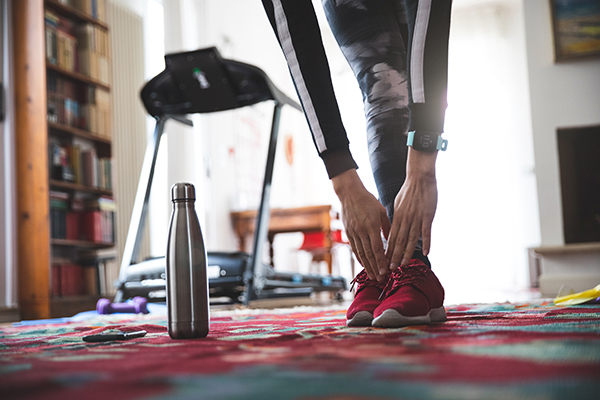How to Take Care of Your Feet: 8 Tips for Runners

If you’re an avid runner, you’re probably aware of the healthy benefits of running: You can do it just about anywhere, go at your own pace, and get a great fat-burning cardio workout.
But you’re probably also aware that pounding the pavement can do a number on your feet. Proper foot care — like stretching, recovery, and choosing the best running shoes — can help ensure your feet are ready for your next run.
Here’s how to take care of your feet so blisters, aches, and pains won’t get in the way of your running program.
Pro tip: Looking to jump into running or boost your speed and stamina?
Try BODi’s 30 Day Breakaway running program that combines resistance training and interval runs to prepare you for a 5K in just one month!
1. Take Care of Your Toenails
“If toenails grow too long, it can lead to excess friction,” says Danielle DesPres, D.P.M., a podiatrist, runner, and board-certified foot and ankle surgeon at The New York College of Podiatric Medicine.
“The nail can easily scrape the insides of the shoe repeatedly, leading to soreness, bruising, damage to the nail, and even set the stage for a fungal infection,” she explains.
But if you cut them too short, you may end up with an ingrown toenail.
The goal is Goldilocks nails — not too short and not too long. Trim toenails straight across, then file to remove any sharp edges.

2. Prevent Blisters and Calluses
Repetitive friction can lead to blisters or calluses. Tsippora Shainhouse, MD, FAAD, a board-certified dermatologist at SkinSafe Dermatology and Skin Care, recommends these simple steps to prevent them:
- Buy well-fitting shoes, and break them in with shorter runs. (A half marathon is not the time to break in a brand-new pair of running shoes.)
- Choose moisture-wicking socks to help prevent chafing.
- Wear a piece of moleskin under your socks on any potential problem areas to help minimize rubbing before a blister has the chance to form.
3. Avoid Athlete’s Foot
This common fungal infection thrives in damp, dark, and warm environments — you know, like sweaty running shoes.
Runners can help prevent athlete’s foot by removing socks and shoes after a run; cleaning and drying feet; and wearing fresh, moisture-wicking socks for each run.
4. Stretch Your Feet
In addition to stretching your quads, hamstrings, and calves, don’t forget to stretch your feet and toes too.
Toes help support your overall body weight and provide balance, so it’s important to keep them strong and flexible, says Jordan Duncan, DC, a chiropractor and owner of Silverdale Sport & Spine.
“Range of motion exercises for our feet and toes are especially important to maintain the mobility required to run,” Duncan says.
Before heading out on a run, Duncan suggests a simple toe yoga stretch: Alternate lifting the big toe only, then the other four toes.
To improve foot flexibility, Duncan suggests rolling your feet over a lacrosse ball, searching for and massaging tight and tender spots on the bottom of the foot.

5. Choose the Right Footwear
The right shoes can make a difference between a painful run and a personal record.
But certain factors that go into choosing the best shoe — like foot shape and arch structure — can be hard to self-assess, says Sara Mikulsky, DPT, a certified personal trainer and regular runner.
“Have your shoes assessed for your feet,” Mikulsky says.
Head to a local running store to get fitted — they can check your stride and recommend the best shoes for your feet. Avoid cotton socks, and instead, stick with lightweight compression socks made from a moisture-wicking material.
“That’ll keep sweat from soaking up and irritating your skin during and after runs,” says John Fawkes, an NSCA-certified personal trainer and certified nutritional counselor. “Plus, the compression fit helps alleviate swelling on your ankles and feet, improving your recovery.”

6. Stretch Your Calves
Tight calf muscles may lead to pain in the ball of your foot while running.
“When your calves are tight, it makes it more difficult for your heel to reach the ground,” DesPres says. “Consequently, more pressure is repeatedly put on the forefoot, leading to inflammation of the nerves in the area and a burning sensation.”
The fix? Add daily calf stretches to your to-do list, especially as part of your post-run cool down.
7. Pay Attention to Aches and Pains
To avoid ending up sidelined with a running injury, take note of any foot pain during a run and make adjustments as needed.
For example, achy arches and pain on the inner ankle may be a sign that you need a different running shoe or an orthopedic insert to provide more support.
This type of pain “is often due to an inflammation of the posterior tibial tendon, which is one of the major tendons in the foot responsible for holding up your arch,” DesPres says. “When this tendon becomes fatigued and overused, pain can develop.”
If you’re having pain on the top of your foot, tight laces could be the simple explanation.
“Often, runners end up with a burning pain on the top of their foot, right where the tongue of the shoe is,” DesPres says.
Loosen your laces and see if the pain subsides after a few runs.
If foot pain persists, a podiatrist can help you pinpoint the cause and get a custom-fitted shoe insert if needed.
8. Make Time for Recovery
After a jog, recovery is key.
A post-run foot soak can help to remove dirt and sweat as well as soothe tired toes. “One of my favorites is Epsom salt with marjoram oil,” Fawkes says.
Research suggests post-exercise massage — like foam rolling your calves and quads — can help reduce delayed-onset muscle soreness, so try rolling your feet on a golf ball or lacrosse ball.
You can also invest in a foot recovery device to get your feet ready for their next run.
